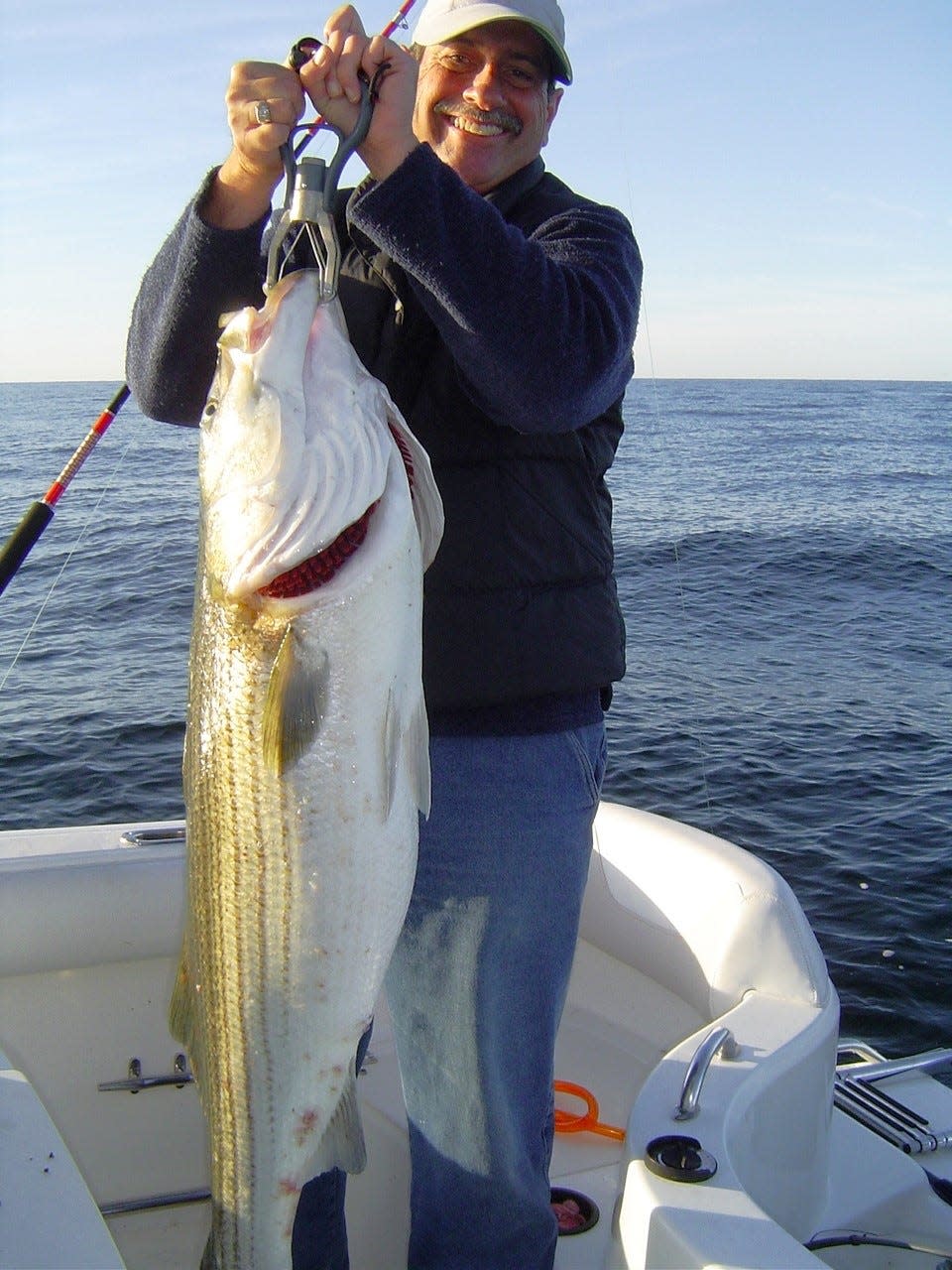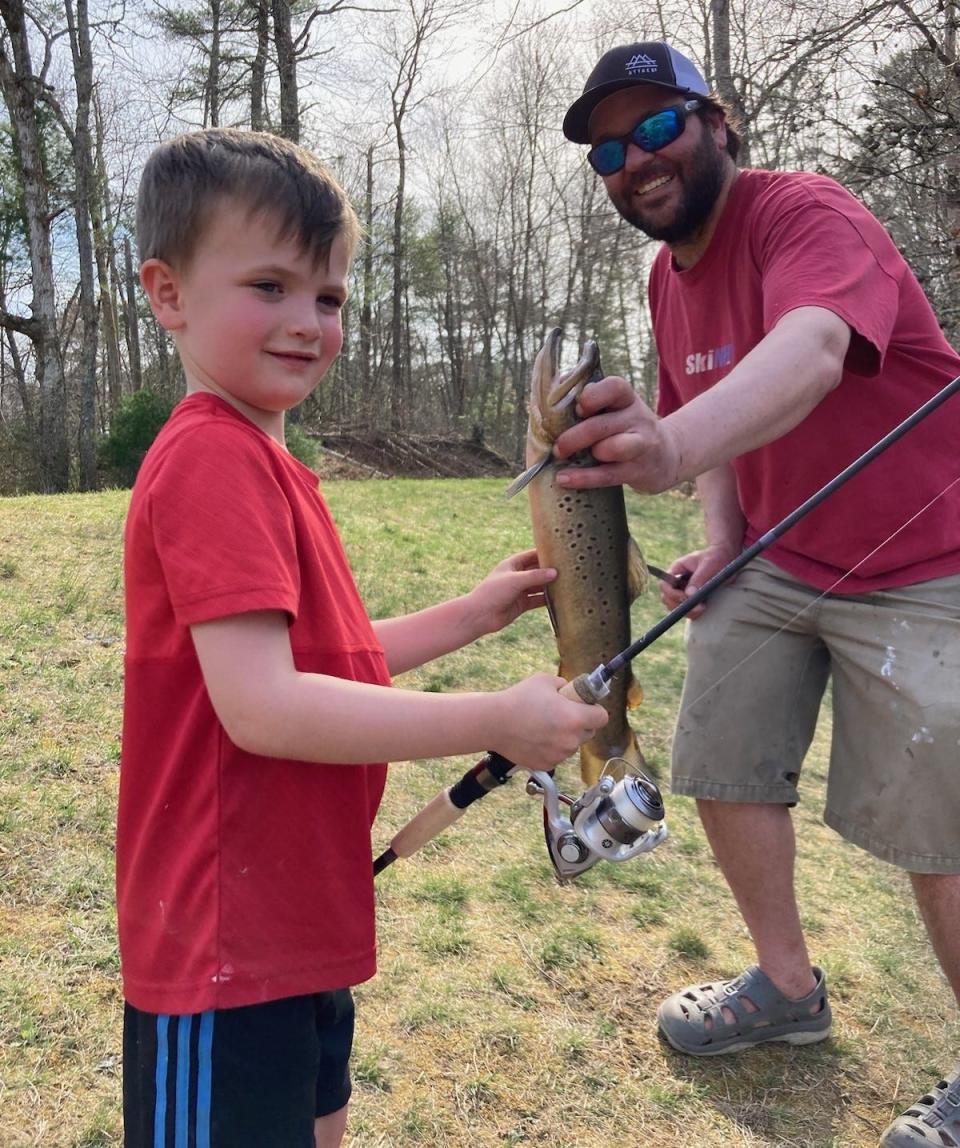Are you ready for fishing season? Here are 4 tips to make sure your gear is good to go!
No one wants to lose a big fish. Not me, yet time and time again we lose fish because the gear is not right for the job, the tackle is faulty or because we are not ready for the fish.
So, get ready today for that big fish in summer.
Here are some tips I use each year:
Is your reel ready to roll?
Give your reels a good cleaning, particularly when the line is off and spool exposed. Grease as directed by the manufacturer — often times the reel is marked where to do this. If instructions are long gone, do not hesitate to stop by your local bait or tackle shop to ask where to grease. Do not grease the drag; it is not meant to be greased. If you do, it will not work.
Every other year (or as needed), I have my reels thoroughly cleaned by a bait and tackle shop or by a rod and reel repair expert. The reels are taken apart and cleaned, parts that are broken or worn are replaced and then everything gets put back together.

A lot is on the line
Each year, replace used line. This is a judgment call as to what is meant by “used.” Braid line may still be OK to leave on the reel; however, I usually take off line at the beginning of the reel that shows signs of wear. Experts say to cross braid line when spooling onto conventional reels to prevent the line from digging into the spool when a big fish is on.
I often fish with lead core line that is designed to sink in the water column when trolling for striped bass and bluefish in 20 to 35 feet of water in Narragansett Bay. I respool the lead core line, putting the used portion on the reel first; this way you use line that is new as most anglers rarely use more than three to four colors (90 feet to 120 feet) of line.
Replace all monofilament line on reels at the start of the season. Monofilament line has memory, so it creates bird nest tangles when it is old or has been sitting in the cold for a while. Also stretch the line, the first 100 feet of monofilament line to relax its memory and avoid tangles.
When you change any type of line, it is important to spool tight or the line may slip on the spool. To prevent braided line from slipping on the reel, first spool some monofilament backing to the reel as it will not slip, tie braid line to the monofilament, then spool the braided line onto the reel.
Check those rods
Examine the rods for cracks and stress marks. Closely examine the eyes for chips or cuts on the ceramic rings inside the eyes. These cracks could cause line to snag, rub or break. Do not place hooks on the eyes or they will eventually create cracks that will cut line as it passes through. Place all lures at the base of the reel, as those hooked to an eye brace will bang on the rod and may cause microscopic cracks in the rod blank that could lead to a broken rod.
Don't forget the tackle
I get tackle ready in chronological order when certain species are fished. In our region, that means starting with tautog, then striped bass, bluefish, fluke, sea bass, etc. Make sure you have enough rigs to fish the species. Hooks should be clean and sharp (no rust), and strong enough for the size fish you are going after. Often hooks that come with lures are not quality hooks, so I replace them with stronger hooks.
Where’s the bite?
Striped bass. Mike Wade of Watch Hill Outfitters said: “Customers are catching fish in the 25-inch range that are holdovers. They also are landing fish in the 12- to14-inch range, which I believe are migrating fish.” Angler Rick Wise of Wakefield said: “I caught and released a holdover striped bass in the 30-inch range Saturday from my kayak using a white soft plastic lure in Salt Pond and then caught several small fish that had lice on them and presumed to be migrating fish.” Fly expert and guide Ed Lombardo said: “I caught a nice keeper last week in the Narrow River and three school bass.” Elisa Cahill of Snug Harbor Marina in South Kingstown reported: “We have had some nice fish taken from Potters Pond [South Kingstown].”

Tautog. “Customers are fishing but no major reports of keeper tautog being caught," Wade said. "However, we are watching reports from New Jersey to Virginia and the bite there is outstanding, although they are in very deep water. Assume once our water warms a bit [now about 47 degrees], the tautog bite will improve." Cahill reported: "We have had a few nice tautog caught in deeper water off wrecks with some nice cod mixed in as they seem to be close, too.”
Freshwater. Jeff Sullivan of Lucky Bait & Tackle in Warren said: “The warm days we had last week stimulated pre-spawn fishing for largemouth bass. … It’s the best I have seen it in over 20 years catching 17 fish, many of them in the 4- to 7-pound range.” Harrison Gatch of Watch Hill Outfitters reported: “The largemouth bass bite has been good with the trout and salmon bite at stocked ponds outstanding. Once again, DEM in RI did a great job stocking area ponds.” Dave Henault of Ocean State Tackle said: "Customer Jeff Spicer has been landing some nice trout at Shippee Sawmill Pond in Foster using Power Bait. Olney Pond at Lincoln Woods has produced trout and salmon for customers, too.”
UPCOMING EVENTS
Fishing photography and seminar
Learn how to take or enhance your fishing photography with designer, photographer and expert fisherman Eddy Stahowicak on Monday, April 24, 7 p.m., at a RI Saltwater Anglers Association (RISAA) seminar, West Warwick Elks Lodge, 60 Clyde St., West Warwick.
Ed Stahowicak has worked as a freelancer, staff designer and photographer for numerous companies. He has had his own design studio and worked at publications such as On-The-Water and is now the RISAA magazine designer.
Whether you are a seasoned digital photographer or just like to take photos with your smartphone, this is the seminar to attend and get inspired.
Dinner is available at 5:30 p.m. with the seminar starting at 7:00 p.m. Non-members invited to attend with a $10 donation to the RISAA Scholarship Fund; members attend free. For information, contact Greg Vespe at (401) 826-2121.
Sung Harbor Used Tackle Sale
The annual Snug Harbor Marina Used Tackle Sale starts Saturday, April 29, at 9 a.m. and will run to 5 p.m. On Sunday, April 30, the dock and tackle shop will open for the sale at 7 a.m. Elisa Cahill of the tackle shop said: “We are getting some great used tackle, including rods, reels, combos, lures, jigs and accessories in every day and will be accepting gear for sale right up until Friday, April 28.” So, if you have gear you no longer use, it could become cash to get that tuna jigging combo or whatever new gear you may need. For information on how the sale works, contact Snug Harbor Marina, 410 Gooseberry Road, Wakefield, RI; (401) 783-7766.
Dave Monti holds a captain’s master license and charter fishing license. He serves on a variety of boards and commissions and has a consulting business that focuses on clean oceans, habitat preservation, conservation, renewable energy and fisheries-related issues and clients. Forward fishing news and photos to dmontifish@verizon.net or visit noflukefishing.com.
This article originally appeared on The Providence Journal: Here are 4 tips to make sure your gear is ready for fishing season

